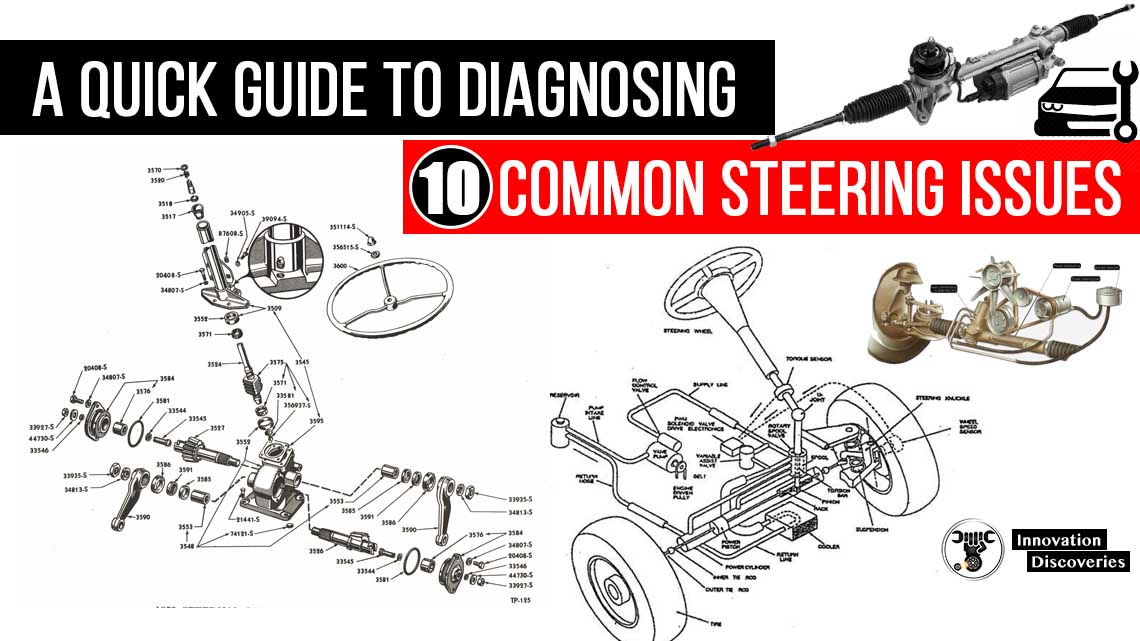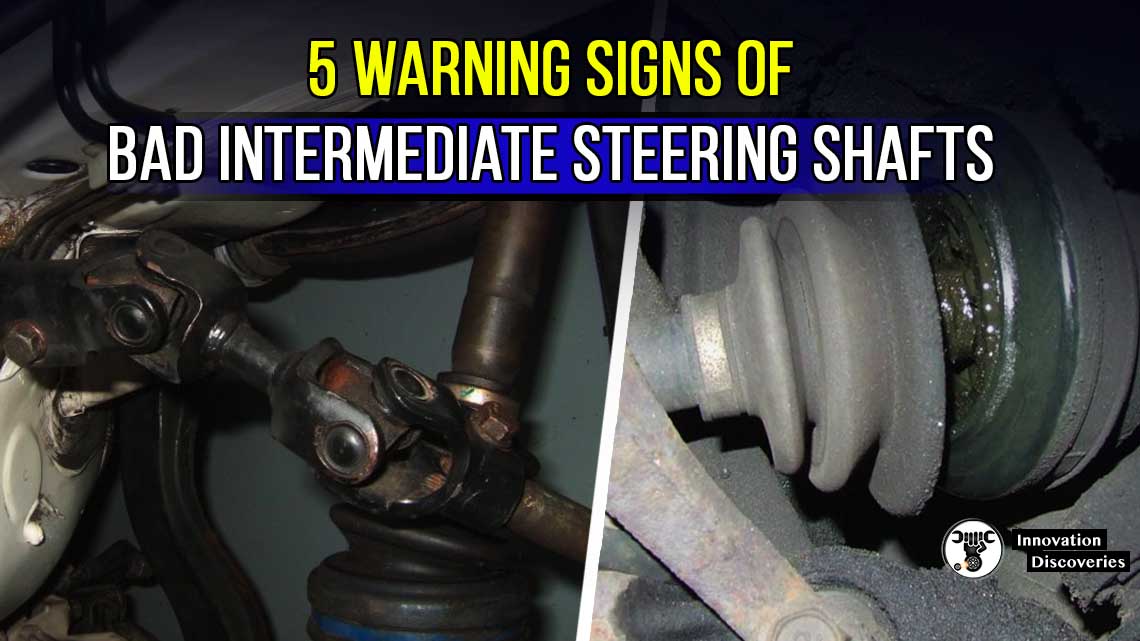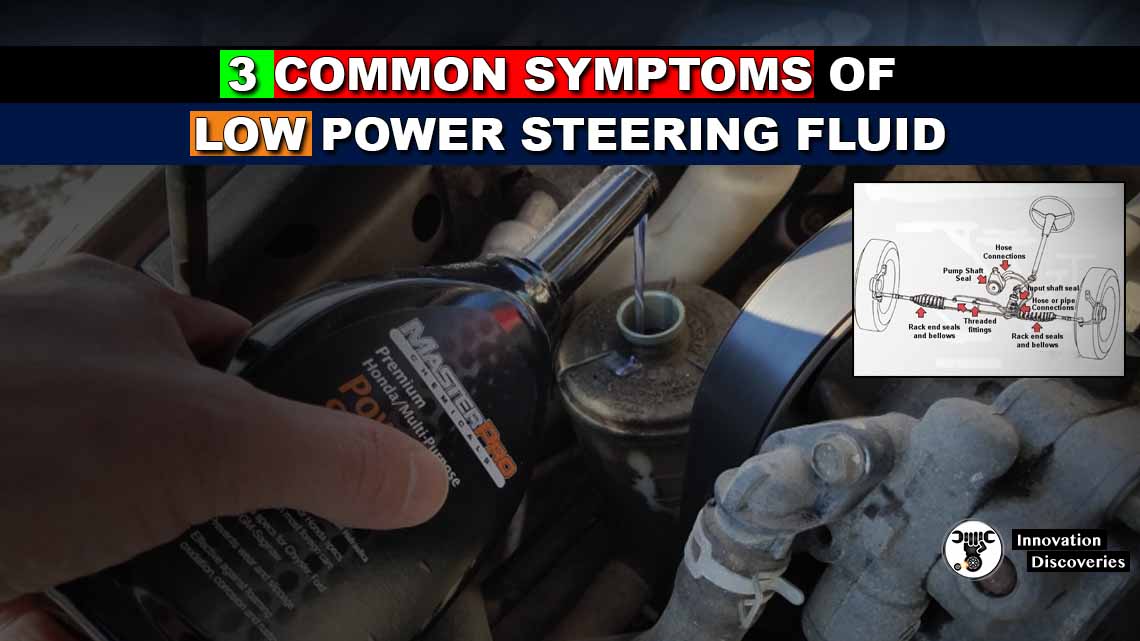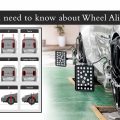
Sloppy steering giving you fits?
Before you curse your steering system, you need to pinpoint the actual cause of the problem.
Poor steering may actually be the result of suspension system issues, worn tires, or other non-steering system inadequacies.
Also, read: HOW AIR SUSPENSION SYSTEMS WORK
Then again, maybe it is your steering system.
Bottom line is, you need to track down the root cause of the problem before you begin to fix poor steering performance.
We’ve included 10 other common steering problems and their likely causes below. By identifying possible trouble spots, you can stop cursing, and start curing, your steering woes.
Read More:
Problem: Hard steering
Description: Hard steering is a condition in which you must exert excessive effort to turn the steering wheel.
Possible Causes
- 1: Friction or too little clearance in the steering gear, steering linkage or ball joints.
- 2: Low or uneven tire pressure.
- 3: Excessive positive caster on wheels/tires, which also causes the steering wheel to return too fast.
- 4: Power steering is inoperative; however, you can eliminate power steering as the culprit by raising the front end of your vehicle off the floor and starting the engine. If the steering wheel still turns easily, the steering is not at fault.
- 5: Body or frame is bent or misaligned.
RIVETS – TYPES, FAILURES OF RIVETED JOINT, TERMS USED IN RIVETING
Problem: Excessive Play in Steering
Excessive play occurs when there is extra movement in the steering wheel without response or movement in the front wheels. Too much play can reduce your ability to steer accurately, or even control the vehicle.
Possible Causes
- 1: Looseness in the steering gear.
- 2: Looseness in the steering linkage.
- 3: Worn ball joints or steering knuckle.
- 4: Loose wheel bearing.
Read More:
Problem: Steering Wander
Wander is a vehicle’s tendency to drift from one side of the road to the other.
Possible Causes
- 1: Mismatched tires or uneven tire pressure.
- 2: Linkage binding or insufficiently lubricated.
- 3: Steering gear binding or insufficiently lubricated.
- 4: Excessive wheel toe-out.
- 5: Looseness in steering gear or linkage.
- 6: Chassis/suspension issues, specifically loose ball joints or leaf springs.
- 7: Uneven load in the vehicle.
THE IMPORTANCE OF CHECKING YOUR TYRE PRESSURE
Problem: Vehicle Pulls to One Side
In this scenario, you’ll notice your vehicle always pulling to one side during normal driving.
Also, read:
Possible Causes
- 1: The most common cause is uneven tire pressure.
- 2: Vehicle out of alignment, typically uneven caster or camber.
- 3: Tire wheel bearing.
- 4: Uneven, sagging, or broken springs.
- 5: Uneven torsion bar adjustment.
- 6: Brakes dragging.
HOW TO TELL WHEN IT’S TIME FOR A CAR TIRE ALIGNMENT
Problem: Vehicle Pulls to One Side While Braking
If your vehicle swerves to one side while braking, look at one of these possible causes:
Possible Causes
- 1: Uneven tire pressure.
- 2: Vehicle out of alignment, typically uneven caster or camber.
Possible Cause #3: Brakes grabbing.
Problem: Steering Shimmy
Shimmy is basically the wobbling of your front wheel on its steering axis, leading to a distinctive side-to-side shake at the front end of your vehicle.
Possible Causes
- 1: Uneven or low tire pressure.
- 2: Loose steering gear or linkage.
- 3: Loose ball joints.
- 4: Front springs are too soft.
- 5: Incorrect or uneven camber.
- 6: Wheel imbalance.
- 7: Worn tires or irregular tire tread.
Also, Read

Problem: Wheel Tramp
Wheel tramp is the hopping up and down of your wheel at higher speeds. In addition to any of the possible causes listed under shimmy, here are a few more possible contributing factors:
Possible Causes
- 1: Wheels out of balance.
- 2: Excessive wheel runout.
- 3: Defective shocks.
Problem: Steering Kickback
Kickback is a sharp or rapid movement by the steering wheel every time the front tires hit a hole or bump in the road. Although some kickback is normal and unavoidable, excessive kickback can be caused by:
Possible Causes
- 1: Low or uneven tire pressure.
- 2: Sagging springs.
- 3: Defective shocks.
- 4: Looseness in steering gear or linkage.
Problem: Poor Steering Wheel Returnability
The phrase “poor returnability” is used to describes a condition in which the steering wheel returns slowly to the straight-ahead position after a turn.
Typically, the wheel will return to a center position once the driver releases it.
If the return is slow or requires you to manually move the steering wheel back to center, you should focus on these areas:
Possible Causes
- 1: Friction in your steering system — steering gear, linkage, etc.
- 2: Friction in suspension system requiring lubrication or replacement of components.
- 3: Excessive negative camber.
- 4: Issues within the power steering system.
Read More:
Problem: Tire Squeal on Turns
This self-explanatory problem is usually caused by taking turns at excessively high speeds. Sound like anyone you know? Sinner.
If, for some reason, this doesn’t sound like you, here are a few more possible causes:
Possible Causes
- 1: Low or uneven tire pressure.
- 2: Improper wheel alignment.
- 3: Worn tires.
ALL ABOUT TIRES, WHAT IS THE MEANING OF NUMBERS ON THE TYRE? WHAT IS INSIDE THE TYRE?
Visit Forum
Visit Our Friendly Website






3 Comments